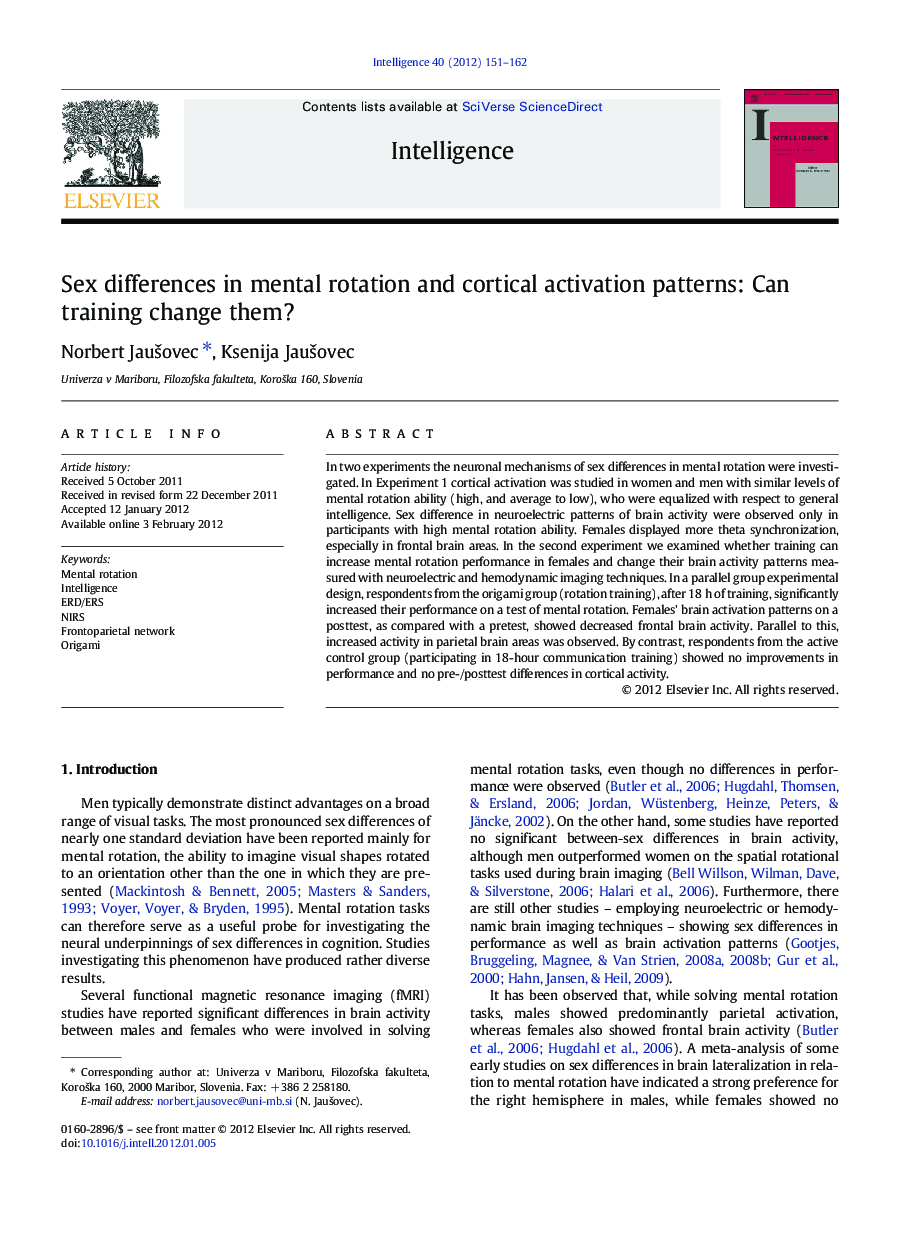| Article ID | Journal | Published Year | Pages | File Type |
|---|---|---|---|---|
| 929105 | Intelligence | 2012 | 12 Pages |
In two experiments the neuronal mechanisms of sex differences in mental rotation were investigated. In Experiment 1 cortical activation was studied in women and men with similar levels of mental rotation ability (high, and average to low), who were equalized with respect to general intelligence. Sex difference in neuroelectric patterns of brain activity were observed only in participants with high mental rotation ability. Females displayed more theta synchronization, especially in frontal brain areas. In the second experiment we examined whether training can increase mental rotation performance in females and change their brain activity patterns measured with neuroelectric and hemodynamic imaging techniques. In a parallel group experimental design, respondents from the origami group (rotation training), after 18 h of training, significantly increased their performance on a test of mental rotation. Females' brain activation patterns on a posttest, as compared with a pretest, showed decreased frontal brain activity. Parallel to this, increased activity in parietal brain areas was observed. By contrast, respondents from the active control group (participating in 18-hour communication training) showed no improvements in performance and no pre-/posttest differences in cortical activity.
► The neuronal mechanisms of sex differences in mental rotation were investigated. ► Women high in mental rotation ability displayed more theta synchronization in frontal brain areas. ► Origami training increased females' performance on a mental rotation test. ► After training cortical activity of females was similar to males high in mental rotation ability.
